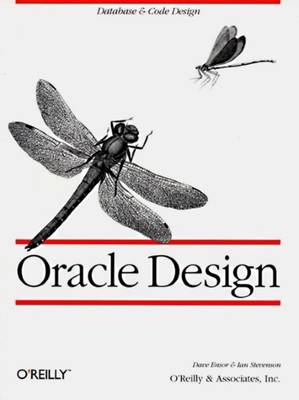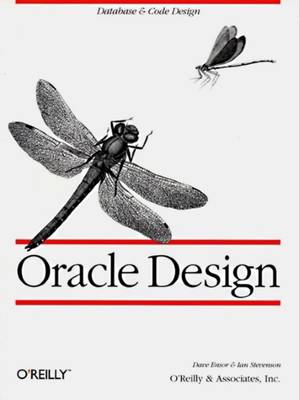
- Retrait gratuit dans votre magasin Club
- 7.000.000 titres dans notre catalogue
- Payer en toute sécurité
- Toujours un magasin près de chez vous
- Retrait gratuit dans votre magasin Club
- 7.000.0000 titres dans notre catalogue
- Payer en toute sécurité
- Toujours un magasin près de chez vous
Description
Oracle Design looks thoroughly at the field of Oracle relational database design. The design of both databases and applications is an often neglected area of Oracle, but one that has an enormous impact on the ultimate power and performance of a system. If the initial design is poor, then the most powerful hardware, the most sophisticated software tools, and the most highly tuned data and programs won't make your system run smoothly and efficiently. Indeed, applications that have been designed poorly will never be able to perform well, regardless of the tuning and retrofitting performed later on.There are three main areas of Oracle design:
- The design of the specific database objects (e.g., tables, views, indexes, stored functions) that will be implemented in a database.The design of the screens, reports, and programs that will maintain the data and allow inquiries against it.Under certain circumstances, the design must also be concerned with the specific environment or technology (e.g., the network topology, the hardware configuration, and the use of a client/server, parallel processing, or distributed database architecture).
- 1. Introduction 2. Why is Design so Important for Oracle? 3. Data Modeling
- 4. Deciding When to Denormalize 5. Choosing Data Types and NULLs 6. Choosing Keys and Indexes 7. Dealing with Temporal Data 8. Loading and Unloading Data 9. Deciding on Object Placement and Storage 10. Safeguarding Your Data
- 11. Designing for Client/Server 12. Designing Distributed Databases 13. Designing for Data Warehouse 14. Designing for Parallel Processing
- 15. Introduction to Code Design 16. Determining Where to Locate the Processing 17. Metrics, Prototypes, and Specifications 18. Locking 19. Selecting the Toolset 20. Designing Screens, Reports, Batch Programs, Error Handling, and Help
- A. Off-the-Shelf Packages B. Tricks of the Trade
Spécifications
Parties prenantes
- Auteur(s) :
- Editeur:
Contenu
- Nombre de pages :
- 552
- Langue:
- Anglais
- Collection :
Caractéristiques
- EAN:
- 9781565922686
- Date de parution :
- 25-03-97
- Format:
- Livre broché
- Format numérique:
- Trade paperback (VS)
- Dimensions :
- 179 mm x 234 mm
- Poids :
- 766 g

Les avis
Nous publions uniquement les avis qui respectent les conditions requises. Consultez nos conditions pour les avis.






